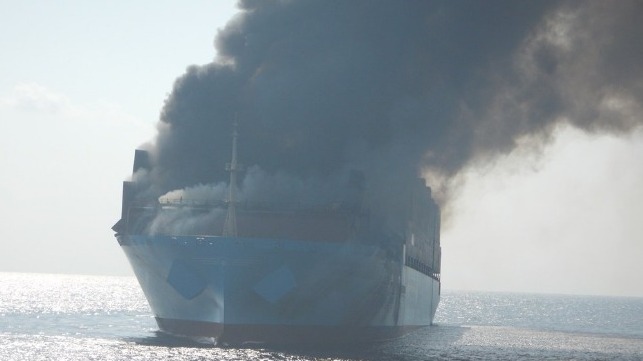Shipping Losses Dropping, but Little Decline in Incidents

Large shipping losses are now at their lowest level this century having declined by over 50 percent year-on-year, according to Allianz Global Corporate & Specialty SE’s (AGCS) Safety & Shipping Review 2019.
The annual study analyzes reported shipping losses over 100 gross tons (GT), and in 2018, 46 total losses of vessels were reported around the shipping world, down from 98 losses 12 months earlier, driven by a significant decline in activity in the global loss hotspot, South East Asia, and weather-related losses (10) halving after quieter hurricane and typhoon seasons.
However, the number of reported shipping incidents overall (2,698 in 2018) shows little decline – less than one percent year-on-year. The most accident-prone vessels of the last year are three Greek Island ferries, all of which were involved in eight different incidents.
Machinery damage is the major cause, accounting for more than a third of the 26,000+ incidents over the past decade – twice as many as the next highest cause, collision. Machinery damage is one of the most expensive causes of marine insurance claims, accounting for over $1 billion in five years.
Improved ship design, technology, tighter regulation and more robust safety management systems on vessels have helped to prevent breakdowns and accidents from turning into major losses. “However, the lack of an overall fall in shipping incidents, heightened political risks to vessel security, complying with 2020 emissions rules and the growing number of fires on board bring challenges,” says Baptiste Ossena, Global Product Leader Hull & Marine Liabilities, AGCS.
The South China, Indochina, Indonesia and Philippines maritime region remains the top loss location. One in four occurred here in 2018 (12), although this is significantly down from 29 a year earlier. The East Mediterranean and Black Sea (six) and the British Isles (four) rank second and third.
Despite signs of improvement, Asia will remain a hotspot for marine claims due to its high level of trade, busy shipping routes and older fleets, says AGCS. However, newer infrastructure, better port operations and more up-to-date navigation tools will help to address challenges.
Cargo ships (15) accounted for a third of vessels lost around the world in the past year. The most common cause of ship losses remains foundering (sinking), which has accounted for more than half (551) of the 1,036 lost over the past decade. In 2018, 30 cases were reported.
Fires continue to generate large losses on board with the number of reported incidents (174) trending upwards. This has continued through 2019 with a number of recent problems on container ships and three significant events on car carriers. Misdeclared cargo, including incorrect labelling/packaging of dangerous goods is believed to be behind a number of fires at sea.
Political risk has heightened around the globe and increasingly poses a threat to shipping security, trade and supply chains through conflicts, territorial disputes, cyber-attacks, sanctions, piracy and even sabotage, as evidenced by recent attacks on oil tankers in the Middle East. The growing number of migrants at sea and an increase in stowaways on commercial vessels also has serious consequences for shipowners, leading to delays, diversions and pressure on crew. Piracy incidents increased in 2018 to more than 200 – Nigeria is now the top global hotspot.
Other risks identified in the AGCS Safety and Shipping Review include:
• The growing number of incidents on larger vessels. Container-carrying capacity has almost doubled over a decade and a worst case loss scenario could cost as much as $4 billion in the future.
• Safety-enhancing technology in shipping has been a positive for safety and claims, yet accidents continue to happen due to over-reliance – even down to losses occurring from crew being on phones.
• Progress on autonomous shipping continues to be made but technology is not a panacea if the root cause of incidents and losses is not addressed.
